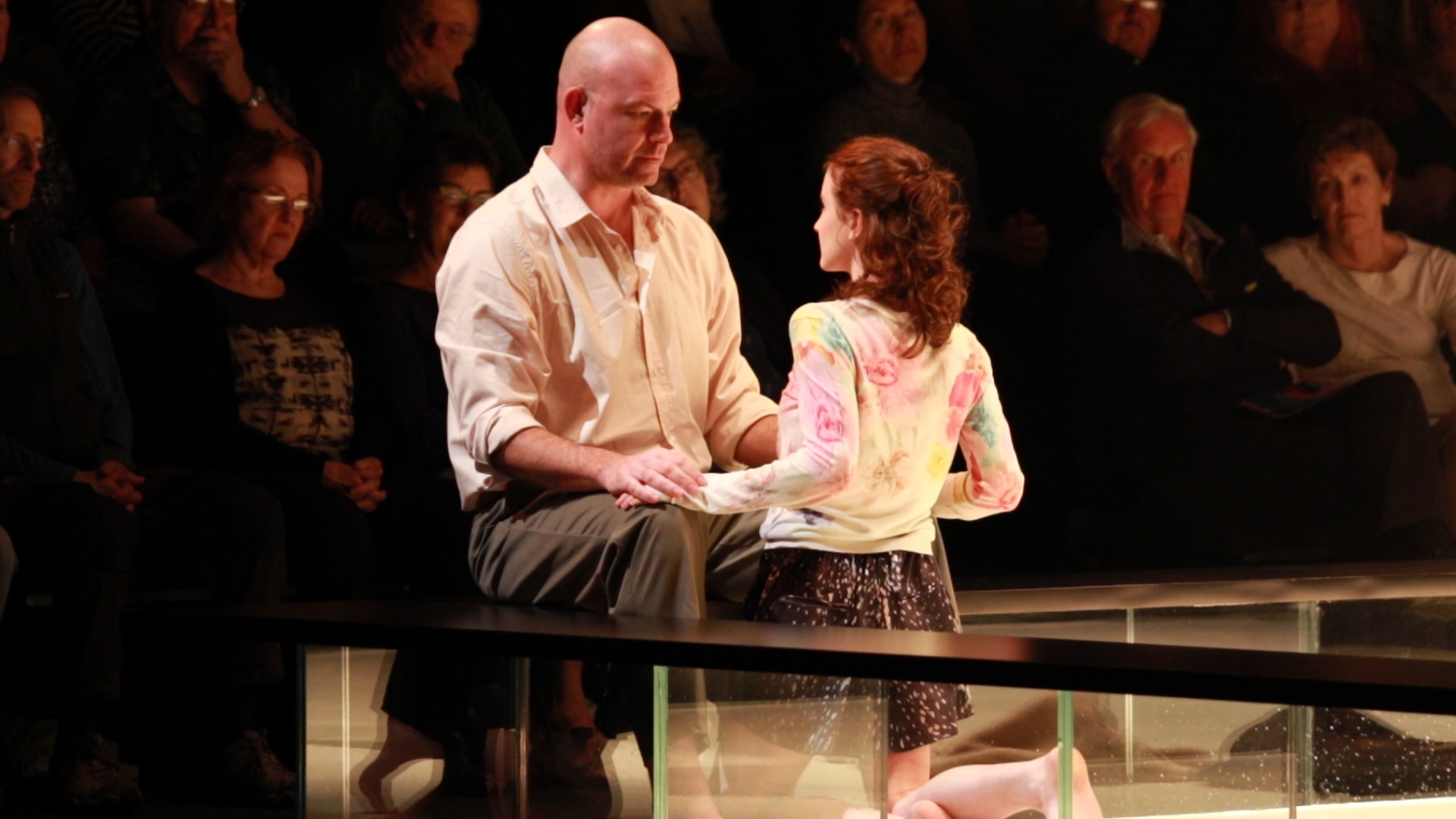As a playwright, Arthur Miller never shied away from politics. In All My Sons and Death of a Salesman, he poked holes in the American Dream. In The Crucible, he mocked the U.S. government for McCarthyism. And in A View from the Bridge—a short, two-act play first produced in 1955—he tackled our prejudice against immigrants.
As a theater company, the Goodman doesn’t shy away from controversy, either. More than 60 years since A View from the Bridge debuted, immigration is still a powder-keg issue, particularly in light of the Trump administration’s travel bans and move to disband the Deferred Action for Childhood Arrivals program. To renew Arthur Miller’s cautionary tale about the cost of prejudice for contemporary audiences, the Goodman is doing something they’ve never done before.
They’re putting the audience directly on the stage.
In the play, Eddie Carbone, an imposing longshoreman who lives in an Italian-American neighborhood beneath the Brooklyn Bridge, is a surrogate father to his orphaned niece. But when the 17-year-old Catherine falls in love with an undocumented Italian immigrant sheltered by Eddie’s wife, things go downhill in a hurry.
It’s a taut, slow-boil drama made all the more vivid by Belgian director Ivo van Hove’s stripped-down production design. There are no sets, props, or atmospheric effects to distract you from the raw human emotion.
I caught up with the show’s two lead actors, Ian Bedford (Eddie) and Catherine Combs (Catherine) to talk about what it’s like to share the stage with an audience for two intense, intimate hours.
What drew you this particular version of A View From the Bridge?
Ian Bedford: [The original play] always struck me as a little melodramatic. But when I saw what Ivo had done with it—he broke the play down and rebuilt it. He took away all of the melodrama and elevated it to something more universal.
Catherine Combs: Typically with this play, the curtain rises and it’s a dusty Brooklyn apartment, and every time someone says “I’ll make some coffee,” someone waddles on stage and hands them coffee. What intrigued me about this version, though, was the idea that the emotional journeys of the characters is enough.
Why is it still relevant in 2017?
Bedford: We’re still fighting the same fights and dealing with the same issues. Not just the socio-political issues, but also the interpersonal family issues at the heart of the play. The political gets swept up into the personal.
Combs: It’s sad to me that we’re still having this conversation about our duty to protect other humans. When we did this show in D.C., it was just a week after the 2016 election, so it was really intense. I don’t think Arthur Miller was predicting the future, these are just issues that we have not resolved as a country.
What’s it like sharing the stage with the audience?
Bedford: It’s incredibly powerful, because their reactions are so close. The front row is two feet from the stage. It liberates you as an actor, and it liberates the director—we have no qualms about turning our back to the proscenium, or playing upstage, or playing diagonally. Also, the people in the house can see the people on the stage, so when you’re watching from the house in Row H, the audience on the stage becomes part of the play. They amplify what’s happening for the rest of the theater.
Combs: The closeness actually feels protective. It’s such an intimate play. When it was first produced, this idea that you were listening in on the private conversations of a married couple—it was almost voyeuristic. It feels like you’re whispering a secret into someone’s ear who’s standing right next to you. It really grounds me and keeps me more honest.
What fascinates you about these characters?
Bedford: Eddie is one of the great tragic heroes in the theatrical canon. I’d rank him up there with Hamlet, MacBeth, Oedipus. I draw a lot of comparisons, not just to Shakespeare, but to classical Greek theater. I’ve done the title role in MacBeth and Richard III, and they both remind me of this role because of the sheer physical endurance that it requires.
Combs: Catherine isn’t two-dimensional. She doesn’t just want to get married. I feel like Miller wrote a complete human being, and sometimes it’s hard to find that in a character for a young woman. Even though she’s young and sheltered, Miller doesn’t underestimate her ability to navigate through this deeply uncomfortable situation.
Catherine, this is your third production at the Goodman. What’s special about it compared to other theaters around the country?
Combs: It’s a very happy place to work! When you get there, you can feel it in every level of production, from the creative team to the Goodman staff. There’s a reason people stay there for decades, and a reason I keep coming back. They create a very healthy environment where they foster a limit-free space for ideas and creativity. Also, [artistic director] Robert Falls has been having very conscious seasons, picking plays that need to be told in the times we’re currently in. He really embraces that responsibility.
Through Oct. 22. A View From the Bridge at the Goodman Theatre, 170 N. Dearborn. $25-$95. goodmantheatre.org



